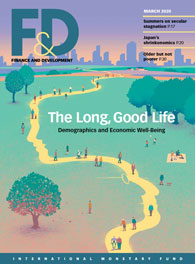Imf World Economic Outlook Update September 2020
economic september updateINTERNATIONAL MONETARY FUND Published Date. But with the COVID-19 pandemic continuing to.
 World Economic Outlook Imf Report A Crisis Like No Other An Uncertain Recovery Youtube
World Economic Outlook Imf Report A Crisis Like No Other An Uncertain Recovery Youtube
Learn more about connecting for a resilient world.

Imf world economic outlook update september 2020. Global growth is projected at 44 percent in 2020 a less severe contraction than forecast in the June 2020 World Economic Outlook WEO Update. And a hit to productivity as surviving businesses ramp up necessary workplace safety and hygiene practices. The COVID-19 pandemic has had a more negative impact on activity in the first half of 2020 than anticipated and the recovery is projected to be.
A Long and Difficult Ascent. Middle East and Central Asia. World Economic Outlook October 2020 The International Monetary Fund.
The Middle East and Central Asia MCD region has reacted to the global COVID-19 pandemic with swift and stringent measures that have saved lives. Global growth is projected to rise from an estimated 29 percent in 2019 to 33 percent in 2020 and 34 percent for 2021a downward revision of 01 percentage point for 2019 and 2020 and 02 for 2021 compared to those in the October World Economic Outlook WEO. Greater scarring damage to supply potential from the larger-than-anticipated hit to activity during the lockdown in the first and second quarters of 2020.
Regional Economic Outlook Update. During May and June as many economies tentatively reopened from the Great Lockdown the global economy started to climb from the depths to which it had plunged. Listen to the 2020 economic outlook podcast.
World Economic Outlook October 2020 The International Monetary Fund. The revision reflects better-thananticipated second quarter GDP outturns mostly in advanced economies where activity began to. Go straight to smart.
The global economy is climbing out from the depths to which it had plummeted during the Great Lockdown in April. Global growth is projected at 44 percent in 2020 a less severe contraction than forecast in the June 2020 World Economic Outlook WEO Update. The June 2020 WEO Update provides additional information on the economic forecast during the pandemic.
In its January World Economic Outlook Update the global lender said gross domestic product likely plunged by 96 last year due to the pandemic deeper than the states current forecast of a -85. Growth Resuming Dangers Remain. World Economic Outlook October 2020 The International Monetary Fund.
The revision reflects better-thananticipated second quarter GDP outturns mostly in advanced economies where activity began to improve. See also the World Economic Outlook Reports. The revision reflects better-thananticipated second quarter GDP outturns mostly in advanced economies where activity began to improve.
World Economic Outlook June 2020 Update July 8 2020 Now available online. World Economic Outlook Update June 2020. 10 February 2021.
A Crisis Like No Other An Uncertain Recovery June 24 2020 Description. World Economic Outlook October 2020 The International Monetary Fund. Global growth is projected at 44 percent in 2020 a less severe contraction than forecast in the June 2020 World Economic Outlook WEO Update.
World Economic Outlook October 2020 The International Monetary Fund. However these policies have also had a large impact on domestic economic activity. As noted in the October 2020 World Economic Outlook WEO a green investment push coupled with initially moderate but steadily rising carbon prices would yield needed emissions reductions while supporting the recovery from the pandemic recession.
Global growth is projected at 49 percent in 2020 19 percentage points below the April 2020 World Economic Outlook WEO forecast. Strong multilateral cooperation is required to bring the pandemic under control everywhere. Global growth is projected at 44 percent in 2020 a less severe contraction than forecast in the June 2020 World Economic Outlook WEO Update.
Weekly global economic update February 2021. MethodologyAggregation Modeling and Forecasting. The months after the release of the June 2020 World Economic Outlook WEO Update have offered a glimpse of how difficult rekindling economic activity will be while the pandemic surges.
The downward revision primarily reflects negative surprises to economic activity in a few emerging market economies notably India which led to a reassessment of growth prospects over the next two years. During May and June as many economies tentatively reopened from the Great Lockdown the global economy started to climb from the depths to which it. The months after the release of the June 2020 World Economic Outlook WEO Update have offered a glimpse of how difficult rekindling economic activity will be while the pandemic surges.
The revision reflects better-thananticipated second quarter GDP outturns mostly in advanced economies where activity began to. Global growth is projected at 44 percent in 2020 a less severe contraction than forecast in the June 2020 World Economic Outlook WEO Update. In economies with declining infection rates the slower recovery path in the updated forecast reflects persistent social distancing into the second half of 2020.
Global Economy Climbing Out of the Depths Prone to Setbacks. Selected series from the publication are available in a database format. The World Economic Outlook WEO database is created during the biannual WEO exercise which begins in January and June of each year and results in the April and SeptemberOctober WEO publication.
The revision reflects better-thananticipated second quarter GDP outturns mostly in advanced economies where activity began to. The World Economic Outlook WEO database contains selected macroeconomic data series from the statistical appendix of the World Economic Outlook report which presents the IMF staffs analysis and projections of economic developments at the global level in major country groups and in many individual countriesThe WEO is released in April and SeptemberOctober each year. The International Monetary Fund says that inequitable distribution of vaccines risks exacerbating financial vulnerabilities especially for frontier market.



